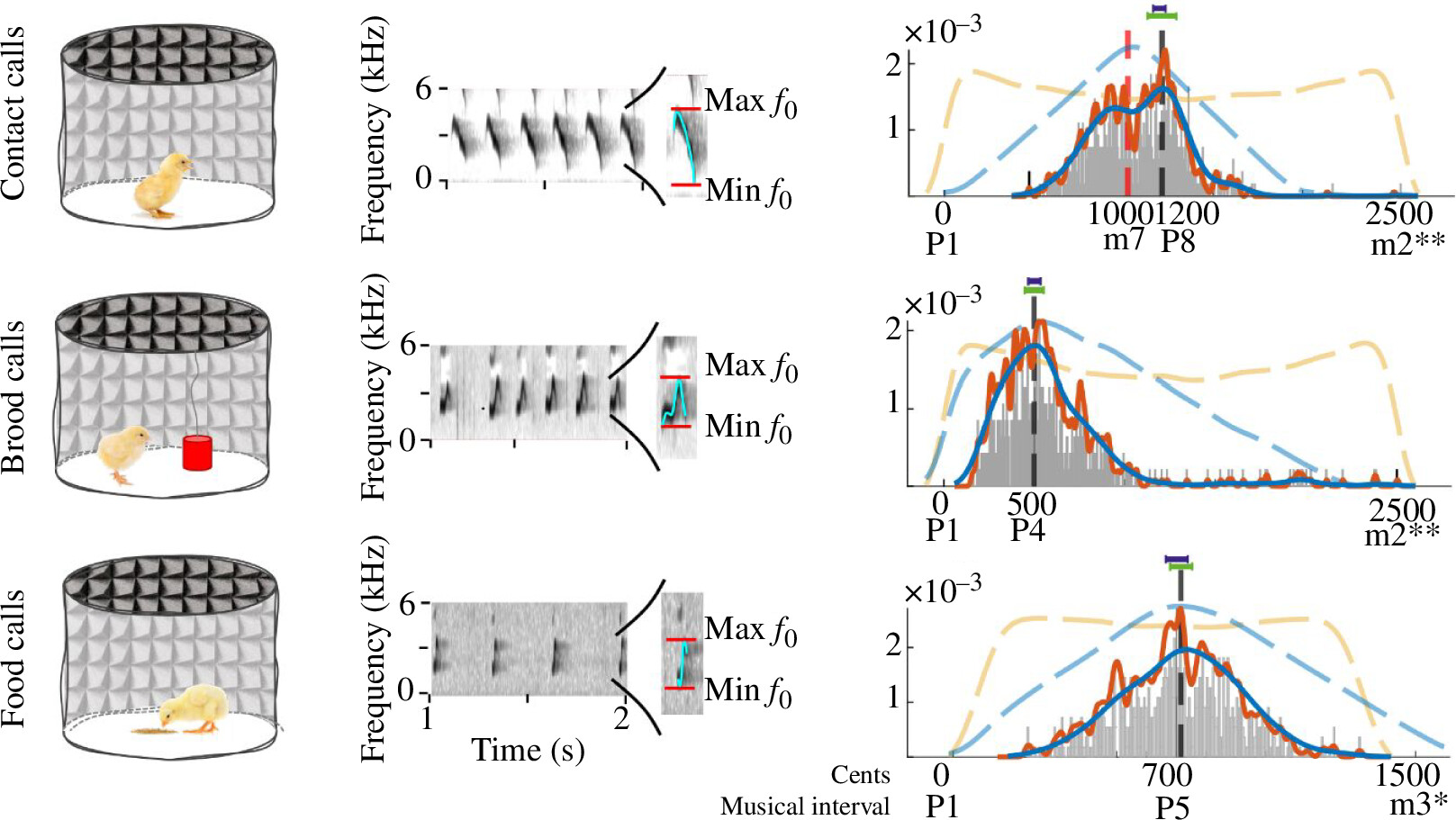Study finds preference for consonant sounds linked to social signal vocal production in Humans and Animals

The studies conducted by the two universities showed that consonant intervals are produced in acoustic social signals:
Previous research by the University of Trieste had already led to the discovery that chicks, like other species, prefer so-called consonant musical intervals. As a matter of fact, the latter are those that most resemble the sound produced by living beings, while the dissonant ones recall the lesser harmony of environmental sounds. At the time, the reasons for this were unknown”, recalls Andrea Ravignani, Professor of General Psychology at Sapienza’s Department of Human Neuroscience.
Chickens: the birds that have nurtured civilisation
The research was carried out on one hundred and thirty featherless chicks; once hatched, the chicks - which do not require any parental care, neither to develop their vocal repertoire nor to walk - were reared for four days, in pairs, in rectangular cages at a controlled room temperature. The researchers needed to analyse chick's typical calls - part of a complex vocal code that they develop from hatching to adulthood to communicate their needs to other conspecifics and to express the positive or negative nature of a situation they are experiencing.
Thus, the researchers stimulated the production of each type of chicks' call by gradually recreating the natural situation associated with each one and recorded them in soundproof arenas:
- contact calls, emitted by the chick when it feels discomfort, were captured after leaving the chicks alone in the empty arena after separating them from their rearing mate and the imprinting object;
- brooding calls, usually emitted in pleasant situations, were captured by placing an imprinting object in the centre of the arena after initial isolation;
- food calls, emitted when the chick identifies a profitable food source, were recorded after placing a food dish in the centre of the arena after removing the imprinting object.

After analysing the minimum and maximum peaks of the fundamental frequencies and calculating their ratio, the study revealed the prevalence of perfect consonance in all types of calls, confirming the idea that consonant sounds are intrinsically present in animal communication. The only recorded dissonances were found in situations of particular distress, such as isolation contexts.
This research could open up promising applications: a chick that emits a sound with a certain frequency probably indicates a certain type of situation, and we now know that the most harmonious calls are those emitted in the most pleasant situations”, explains Cinzia Chiandetti, associate professor of psychobiology at the Department of Life Sciences at the University of Trieste.
The expert concludes that, based on the frequency of consonances or dissonances, one may infer the emotional state of the animal associated with the context it is in. Thus, we are not that far from being able to imagine devices that can record the calls and return the level of comfort or stress of the animal in front of us.
Other Highlights this month:
UofG-lead research team tracks new ways to tackle tuberculosis transmission in Africa
UB-trained Romanian high schoolers have dominated the Olympiads this summer
